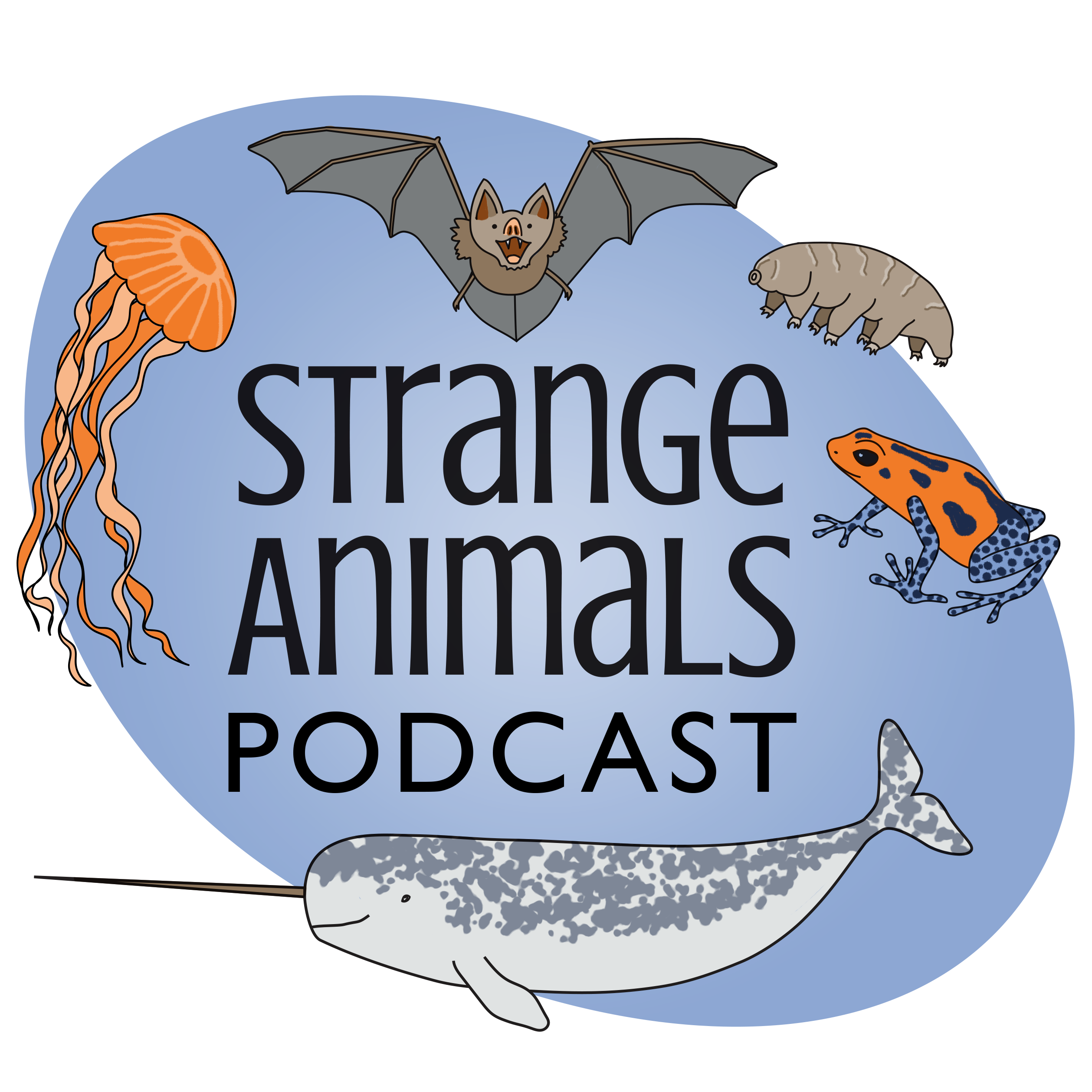Episode 389: Updates 7 and the Lava Bear

It's our annual updates episode! Thanks to Kelsey and Torin for the extra information about ultraviolet light, and thanks to Caleb for suggesting we learn more about the dingo!\n\nFurther reading:\nAt Least 125 Species of Mammals Glow under Ultraviolet Light, New Study Reveals\nDNA has revealed the origin of this giant \u2018mystery\u2019 gecko\nBootlace Worm: Earth\u2019s Longest Animal Produces Powerful Toxin\nNon-stop flight: 4,200 km transatlantic flight of the Painted Lady butterfly mapped\nGigantopithecus Went Extinct between 295,000 and 215,000 Years Ago, New Study Says\nFirst-Ever Terror Bird Footprints Discovered\nLast surviving woolly mammoths were inbred but not doomed to extinction\nAustralian Dingoes Are Early Offshoot of Modern Breed Dogs, Study Shows\nA (badly) stuffed lava bear:\n\n\n\nShow transcript:\nWelcome to Strange Animals Podcast. I\u2019m your host, Kate Shaw.\nThis week we have our annual updates episode, and we\u2019ll also learn about a mystery animal called the lava bear! As usual, a reminder that I don\u2019t try to update everything we\u2019ve ever talked about. That would be impossible. I just pick new information that is especially interesting.\nAfter our episode about animals and ultraviolet light, I got a great email from Kelsey and Torin with some information I didn\u2019t know. I got permission to quote the email, which I think you\u2019ll find really interesting too:\n\u201cYou said humans can\u2019t see UV light, which is true, however humans can detect UV light via neuropsin (a non-visual photoreceptor in the retina). These detectors allow the body to be signaled that it\u2019s time to do things like make sex-steroid hormones, neurotransmitters, etc. (Spending too much time indoors results in non-optimal hormone levels, lowered neurotransmitter production, etc.)\n\u201cHumans also have melanopsin detectors in the retina and skin. Melanopsin detectors respond to blue light. Artificial light (LEDs, flourescents, etc) after dark entering the eye or shining on the skin is sensed by these proteins as mid-day daylight. This results in an immediate drop in melatonin production when it should be increasing getting closer to bedtime.\u201d\nAnd that\u2019s why you shouldn\u2019t look at your phone at night, which I am super bad about doing.\nOur first update is related to ultraviolet light. A study published in October of 2023 examined hundreds of mammals to see if any part of their bodies glowed in ultraviolet light, called fluorescence. More than 125 of them did! It was more common in nocturnal animals that lived on land or in trees, and light-colored fur and skin was more likely to fluoresce than darker fur or skin. The white stripes of a mountain zebra, for example, fluoresce while the black stripes don\u2019t.\nThe study was only carried out on animals that were already dead, many of them taxidermied. To rule out that the fluorescence had something to do with chemicals used in taxidermy, they also tested specimens that had been flash-frozen after dying, and the results were the same. The study concluded that ultraviolet fluorescence is actually really common in mammals, we just didn\u2019t know because we can\u2019t see it. The glow is typically faint and may appear pink, green, or blue. Some other animals that fluoresce include bats, cats, flying squirrels, wombats, koalas, Tasmanian devils, polar bears, armadillos, red foxes, and even the dwarf spinner dolphin.\nIn episode 20 we talked about Delcourt\u2019s giant gecko, which is only known from a single museum specimen donated in the 19th century. In 1979 a herpetologist named Alain Delcourt, working in the Marseilles Natural History Museum in France, noticed a big taxidermied lizard in storage and wondered what it was. It wasn\u2019t labeled and he didn\u2019t recognize it, surprising since it was the biggest gecko he\u2019d ever seen\u2014two feet long, or about 60 cm. He sent photos to several reptile experts and they didn\u2019t know what it was either. Finally the specimen was examined and in 1986 it was described as a new species.